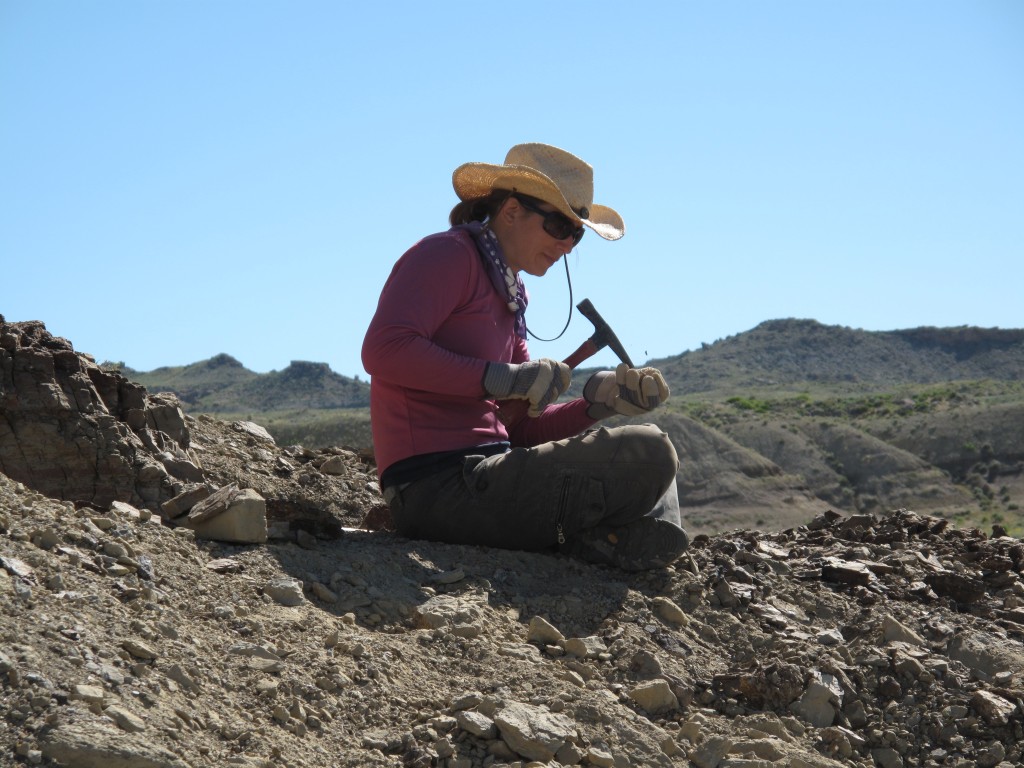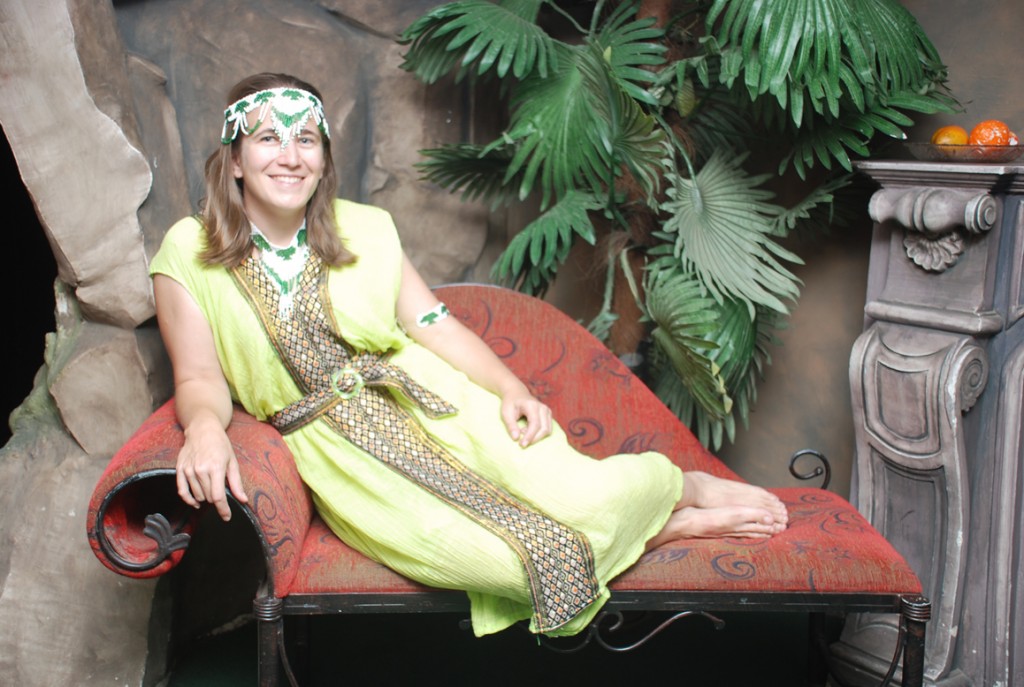The portrayal of paleontological fieldwork in the mainstream media has changed little in the last hundred years. Generally, it’s a bunch of guys (the bigger and scruffier the better) swinging heavy pick-axes, enduring the elements, and spending evenings sitting around the campfire eating meat, drinking beer, smoking, and telling tales. Nine times out of ten, the object of their quest is either dinosaurs or human ancestors.
I don’t fit that mold. After all, I’m only 5’7” and 150lbs and will never grow a beard. I am a university professor (trying to minimize scruffiness), an environmentalist (trying to minimize carnivory), and a marathon runner (trying to minimize drinking). I’ll never be strong enough to hoist a giant fossil bone, and it takes me two shovelfuls to clear what a larger man can in one. I lead expeditions to study the response of organisms to past climate change, and because dinosaur or hominid bones are inappropriate for the research that excites me, I dig fossil plants.
Nonetheless, I am a paleontologist who has done fieldwork on six continents (Antarctica awaits) and collected tens of thousands of plant fossils. National Geographic and the National Science Foundation have funded my expeditions, and I publish a couple scientific papers on my research each year. I’ve had the obligatory close encounters with rattlesnakes, scorpions, and even a deadly water cobra (that one still makes me shiver), worked under armed guard, enjoyed many servings of raw cow (miraculously, no tapeworms!), and held my own drinking with international aid workers (and you thought geologists drank a lot). I’ve had malaria once and giardia more times than I care to remember.
By the way, I’m also a woman, in case you couldn’t tell that from my perfectly manicured blue toenails and matching 99 cent flip-flops. Over the past couple years, I’ve given a number of talks at other universities, and never fail, someone will tell me how much they appreciate the female students getting to interact with a “successful female scientist like you.” I’m flattered, but these girls deserve more role models than me, and to be frank, they deserve better role models than me.
I may never break into the “old boys club,” but I can positively channel my frustrations and fears in this blog. So, during this Mother’s Day month, I am reactivating my blog and daring to achieve the following goal: each day, I will post an image of a female field paleontologist or geologist that I admire and write a paragraph explaining exactly why she inspires me. This is a personal list, and I know I will omit many amazing scientists. My rationale is purely selfish. I need reminders that, despite what I see on TV and in popular science magazines, I’m not alone in this old boys club. Female scientists are not the horrors portrayed on the Big Bang Theory. They are an inspirational, amiable, beautiful, rugged, intelligent, and adventurous group!
And if this blog inspires and encourages anyone else, that’s like icing on a Never Fail Chocolate Cake!


* “An Unsuitable Job for a Woman” is the title of the first of the Cordelia Gray mystery novels by P.D. James.
** Part of the impetus to begin this project stems from conversations with Lexi Marsh and Steve Manchester.
I am a paleontologist working in lab and field settings on Cenozoic mammals. I often joke that maybe if I grew a beard people would take me more seriously. Thank you for bringing attention to women in our field.
Hi Ellen! Just wanted to say I LOVE this idea….as a female paleontologist who does some intense field work from time to time (usually without other women) it’s great to see these profiles and be reminded that we’re not alone. Recently I was on a field trip to Death Valley where the women actually EQUALLED the men – most of us were grad students, post docs, or junior faculty — and it felt so amazing to be surrounded by strong adventurous women scientists it made us all giddy. Hopefully someday that will become the norm.
My first thought on this was, “Oh, like Laura Dern’s character on Jurassic Park.””